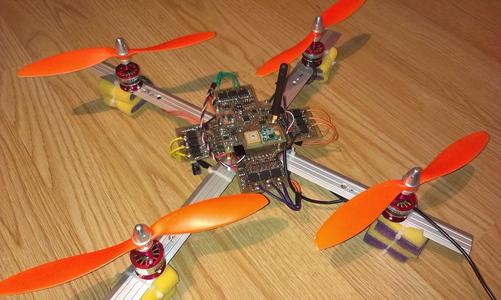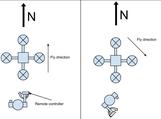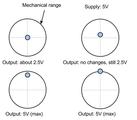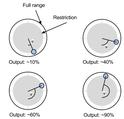| Project info | |
| Start date | February 2013 |
| Weight | 700g with batteries |
Short story
My goal was never to create a quadcopter, I always knew it is very difficult task, especially, because of the fact that I like reinventing the wheel and do everything from scratch. At the beginning, I just wanted to make BLDC motor driver, it worked, then, I attached a propeller and an accelerometer and tested if I was able to write a speed controller for a motor attached at the end of a long arm. I was. The arm was reaching desired angles very fast. Then I made a double driver and a simple quad frame, attached them to it, it worked, the controller was able to keep the frame at "fixed" position. Then I made a quad driver, a remote controller, tons of PCBs, thousands lines of code, and it is, my own quadcopter.Flight controller
| Module info | |
| Microcontroller | STM32F103C8T6 32-bit ARM Cortex-M3 |
| Clock | 8 MHz |
| Peripherals |
MPU6050 Accelerometer/gyroscope HMC5883L Magnetometer BMP085 Pressure sensor FGPMMOPA6E GPS module RFM69HW Radio module (FSK)" |
| Power supply | MC34063 DC/DC converter from 12V to 3.3V |
- Supervise battery cells voltages
- Process GPS data
- Transmit and receive data to/from remote controller and PC interface
- Process barometer reads
- Manage critical situations like connection lost with remote controller
Motors driver
| Module info | |
| Microcontroller | STM32L100RBT6 32-bit ARM Cortex-M3 |
| Clock | 16 MHz |
Remote controller
| Info | |
| Microcontroller | STM32F103C8T6 x2 32-bit ARM Cortex-M3 |
Second part of the remote controller controls throttle. PS2 joysticks have very poor resolution, they start changing voltage very late (after about 1-2mm) and get saturated very early. My solution is to take inclination angle of the knob instead of its absolute position and restrict mechanical movements to prevent results of being saturated. It is simple arctan(y/x) in fact, but allowed me to still use those joysticks.
PC interface
Interface between remote controller, quadcopter and software on PC. KDcopter software on PC provides a lot information about current state of the quadcopter like cells voltages, sensor reads, quadro and remote controller positions and lot of other things.Radio communication
| Info | |
| Frequency | 868 MHz |
| Tested range | 200 m |
Control panel
-GPS
Quadcopter, as well as remote controller are equipped with GPS receivers. They are not currently used to control position, but they work and provide real location.Resources
- [1] Open source IMU and AHRS algorithms by x-io Technologies - Excellent IMU algorithms.










